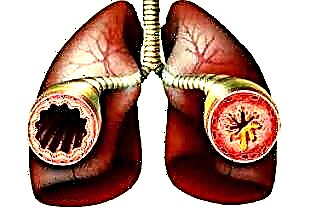Otitis media is an otolaryngological disease in which one of the main parts of the ear becomes inflamed. Catarrhal processes can be triggered by infection, allergies, or injury. The development of ear pathology is signaled by shooting pains, the release of exudate from the external auditory canal, a feeling of ear congestion, etc.
ENT disease often leads to serious complications that provoke the development of autophony, conductive hearing loss and deafness. That is why many people are interested in the answer to the question: "Is otitis media contagious?" It depends on the "verdict" whether there is a need to isolate the patient for the period of treatment or not.
On the infection of the body

The world around us represents an aggressive environment for the human body, densely populated with pathogenic bacteria, protozoa, fungi and viruses. But due to the presence of immunity, infection is rare. As a rule, the intensive reproduction of opportunistic microorganisms is due to a decrease in the reactivity of the body, which leads to the appearance of inflammatory processes.
The likelihood of inflammation in the ENT organs is largely determined by the following factors:
- the level of concentration of pathogens in the environment;
- the degree of decrease in the reactivity of the body;
- ways of spreading the infection;
- factors of chance.
Infection of the body with a viral, fungal or bacterial infection occurs only when two or three of the above factors coincide. In all other cases, the immune system successfully repels attacks from pathogens.
How the infection gets into the ear
In 87% of cases, the cause of the development of inflammatory processes in the ear is a general infection affecting the upper respiratory tract. In other words, ear pathology develops as a complication of the following diseases:
- tonsillitis;
- pharyngitis;
- sinusitis;
- rhinitis;
- flu;
- pneumonia.

The causative agents of ENT diseases are nonspecific pathogens, which include streptococci, Haemophilus influenzae, pneumococci, Proteus, meningococci, Pseudomonas aeruginosa, etc. The spread of pathogenic flora and, accordingly, ear infection occurs in the following ways:
- hematogenous pathway - pathogens penetrate the ear mucosa with blood flow;
- tubal pathway - infection occurs through the Eustachian tube, which communicates the ear cavity with the nasopharynx;
- transtympanic pathway - the spread of infection into the middle ear is caused by a violation of the integrity of the tympanic membrane;
In about 3% of cases, otitis media develops against the background of meningitis, in which the pathogenic flora penetrates the ear labyrinth or the middle ear cavity from the cranium when the meninges are damaged by a viral or bacterial infection.
Is otitis media contagious?
The key reason for the occurrence of lesions in the middle and inner ear lies in the penetration of pathogens from the nasopharynx. Influenza, sore throat or a cold can trigger the development of ear pathology. The inner and middle ear are located inside the cranium, they are separated from the external auditory canal by the tympanic membrane. Therefore, airborne or contact transmission of infection is impossible.
Important! If the influenza virus is the root cause of the ear pathology, the patient should be isolated. However, this must be done in order to prevent the flu itself, and not otitis media.
It is worth noting that in about half of cases, catarrhal inflammation in the ear occurs as a result of hypothermia or allergies. This leads to edema of the mucous membrane of the Eustachian tube, as a result of which its ventilation function is impaired. Therefore, transudate can accumulate inside the tympanic cavity, which leads to the appearance of otitis media. However, there are no pathogens in the ear fluid, so it is impossible to become infected with serous otitis media even if the ear membrane is damaged (perforated).
Otitis externa
 Otitis externa is characterized by damage not to the internal cavities of the ear, but to the external auditory canal and the tympanic membrane. This is very different from labyrinthitis and otitis media. In this case, the disease can be of two types:
Otitis externa is characterized by damage not to the internal cavities of the ear, but to the external auditory canal and the tympanic membrane. This is very different from labyrinthitis and otitis media. In this case, the disease can be of two types:
- limited otitis media - inflammation of certain parts of the ear canal, provoked by staphylococci or staphylococci. As a result of purulent inflammation, painful boils form in the lesions. This type of ear pathology can be considered contagious, but more for the patient himself than for others. In the absence of antibiotic therapy, the development of multiple furunculosis is possible;
- diffuse otitis media - the spread of infection throughout the ear canal, auricle and eardrum. Pathology is distinguished by a wide range of etiological pathogens, which include not only pathogenic bacteria, but also fungi.
In epidemiological terms, the greatest threat to others is a fungal infection (otomycosis). How is this otitis media transmitted? If the mycelium of the fungus gets on the skin of the ear canal of a healthy person, the probability of infection will be 70-80%. However, infection is possible only if the following predisposing factors are present:
- reduced reactivity of the body;
- microdamage to the skin;
- lack of sulfur in the ear canal.
Important! Do not clean or wash your ears daily. Washing out earwax leads to a decrease in local immunity, which is fraught with the development of otitis externa.
Purulent otitis media
Purulent otitis media is 3 times more common in children, due to the structural features of the Eustachian tube and the reduced resistance of the child's body. Inflammation can be provoked not only by microbes, but also by viruses. In most cases, ear pathology occurs against the background of influenza, bacterial rhinitis, tonsillitis, etc.
At the stage of perforation of the ear membrane, purulent exudate contained in the ear can get on a pillow, towel, clothes, etc. This creates conditions for the contact transmission of ear disease.
Pediatricians pay attention to the fact that ear pathology very often occurs due to the development of scarlet fever. This leads to sensitization of the body against beta-hemolytic pathogens. An infection that provokes a violation of the immune system poses a danger to the children around. Therefore, with the development of ENT disease, the contact of a sick child with other children should be limited.
An infection that provokes a violation of the immune system poses a danger to the children around. Therefore, with the development of ENT disease, the contact of a sick child with other children should be limited.
How not to get infected?
To prevent the occurrence of inflammatory processes in the ear, care should be taken to observe the necessary preventive measures. Regardless of whether a specific form of ENT disease is transmitted by contact or airborne droplets, it is advisable to follow the following recommendations of doctors to enhance immune protection:
- in the spring-autumn period, use vitamin complexes and immunostimulants to strengthen the immune system;
- avoid constant penetration of water into the ear canal while bathing;
- during the cold season, wear hats to prevent hypothermia;
- if a cold occurs, immediately stop the inflammation to prevent complications;
- include in your daily diet foods rich in vitamins and essential micronutrients.
Compliance with the above rules contributes to an increase in the reactivity of the body, which prevents the development of opportunistic viruses and microbes that provoke inflammation of the ENT organs.



